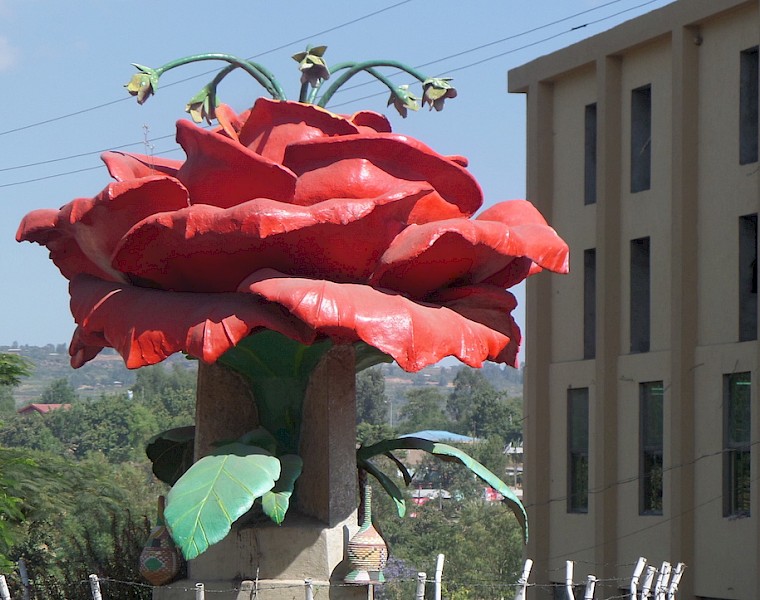In alles wat natuurlijk is, fysiek of metafysisch, in mineralen, planten, dieren en mensen, kun je de functie herkennen in haar verschijningsvorm. De vorm volgt altijd de functie, dat is een natuurwet..
Deze beroemd geworden woorden zijn van de 19e eeuwse architect Sullivan; form follows function werd een trend in the dertiger jaren van de vorige eeuw. In de natuur is iedere vorm een uittdrukking van haar functie. Nu zijn we druk bezig te produceren volgens het bio-mimicry beginsel: in wat we maken of bouwen of aanleggen nemen we een voorbeeld aan de vormen in de natuur omdat de natuur dat het meest efficient doet.
We vinden traditionele landschappen vaak interessatn omdat ook daar het principe form follows function werkzaam is. We genieten van en fotograferen de sawa's, of andere mooie landschappen, om ze thuis te laten zien. Waarom? Omdat ze een prchtige afspiegeling zijn van hoe de samenleving op die plek met de natuurlijke hulpbronnen omgaat. Usually, such a landscape is a result of century long, intricate proceses of interaction of man with nature. It has often been hard. The sawas are such an example, and the polders in the Netherlands as well.
Typical for such landscapes is that they are multifunctional, that they mirror the type of soil (stony or fertile earth, peaty or sandy); they mirror the water situation, arid or wet, salty or sweet. They show us how farmers have been very inventive in managing exactly that particluar situation to grow food and fodder and other items they need for their livelihood. The more complex the agro-ecosystem, the more beautiful we think it is. Since we (through our food industry in the western world) have pressed farmers into growing monocultures, of crops, oil palm, poultry, we have come to appreciate such often old agri-cultures.
So it will not surprise you that in this 21st century transition, we are turning again to more complex types of agriculture and integrated landscape management. The reason is that we must. We must take care of the soil as a living system, it needs to be able to manage itself wit a variety of crops and insects and mycorrhyza. We need to restore forests and bushes on the upper parts of mountains and hills as they prevent erosion. They make the rainwater percolate slowly from top to bottom, recreating sources of water at the foot of hillsides.
We do not treturn to the old ways, in which farmers had to cope with the whole difficult system on their own, like they still do in Ethiopia, in Sierra Leone, in Bangladesh. We need to stop interfering egocentrically by grabbing their land and using it to our own benefits (oil palm plantations, soy plantations, hectares of roses). The New Normal is that through real multistakeholder cooperation, including investors, local government, farmers and local industries, a new business model can be applied. One that restores regional food production and watse management, circular economy, food soveriegnty, soil, nutrient management. One such good example is the approach by Commonland; another one is Eosta, making sure that products from far are produced in an integrated way. Since 2010 in England the LEAF farmers' organisation developed its own checklist for integrated farming, including environment and society. Their quality standard is so high that Unilever sources from them.

